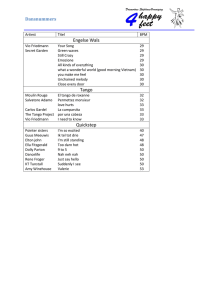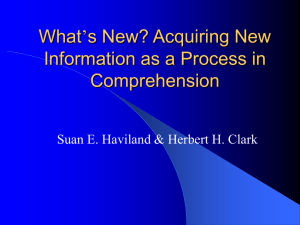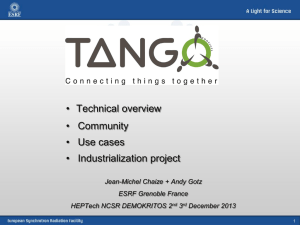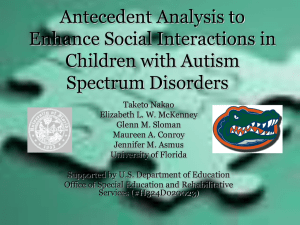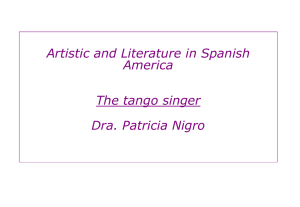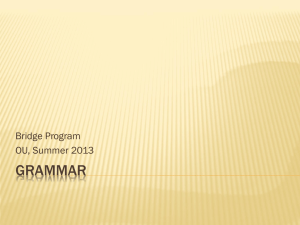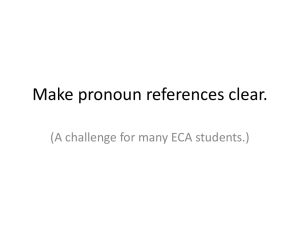Antecedent - Mandrágora Tango
advertisement
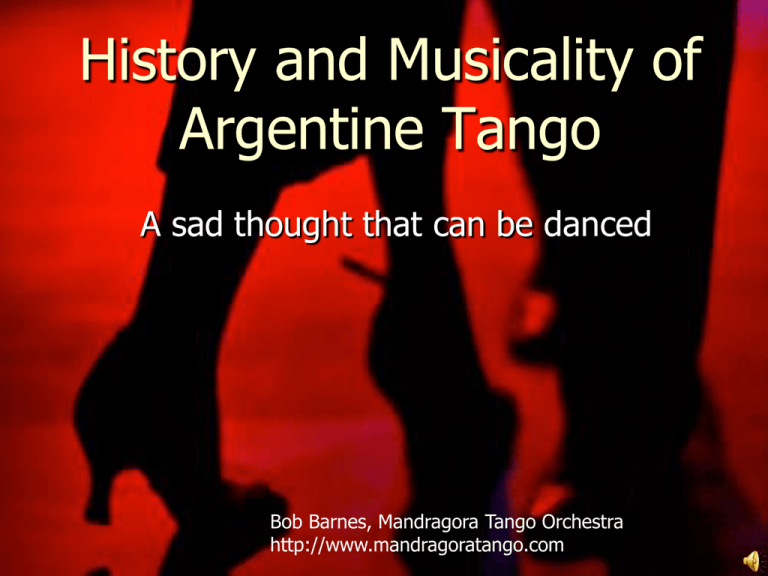
History and Musicality of Argentine Tango A sad thought that can be danced Bob Barnes, Mandragora Tango Orchestra http://www.mandragoratango.com Agenda A Quick gloss of Tango History Telling Tango from Vals from Milonga Micro-Tango: Tango Beats Middle-Tango: Texture and Counterpoint Macro-Tango: Phrasing and Structure Talking about music is like dancing about architecture Laurie Anderson A Brief History of Tango What Is Tango Classical music you can dance to A sad thought that can be danced A vertical expression of a horizontal desire Couple’s dancing where contact isn’t broken and hips are not shaken The only Latin music without drums Argentine Melting Pot Much like the US, but Spanish speaking Founded by Spanish in 1500s Country of immigrants. Most Argentines have Italian names Most Argentines claim to have one cousin in New York and one in Italy (it’s a joke!) Slavery was not a huge economic factor, so much less African influence. The Origins of Tango Cuban “Habanera” Italian Opera & Neapolitan Songs Eastern European Polka Spanish Guitar Tangos first appeared in Brothels Buenos Aires had twice as many men as women in the 1890s Bars and Brothels were social spots for working class men Taxi dancing for a Tanda Men would dance with each other while waiting for women Needless to say, tango was looked down upon by polite society La Guardia Vieja (Old Guard) Quartets of Flute, Guitar, Bando & Violin Pianos and basses added much later A-B-A-Trio form, just like a march or ragtime Firpo, Maglio, Berdi, Orquesta Tipica Victor Here is “Sabado Ingles” (English Saturday) Juan “Pacho” Maglio, 1917 Tango goes to Paris Right after WW1, Tango takes Europe by Storm Huge fad that remains to this day All of a sudden, Tango becomes “respectable” in Buenos Aires Finnish Tango starts at this time but diverges over the 20th Century Canaro en Paris Francisco Canaro took his band to Paris and became superstars. When the Scarpino brothers heard about this, they wrote “Canaro en Paris” to celebrate Warning: In 1917, Pope Benedict XV Condemned the Tango, calling it immoral and lascivious. Your mileage may vary. Garlos Gardel Born 1887 Either in France or Uruguay Do not mention France to an Uruguyan. The French don’t really care, though. One of the first Latin megarecording stars First Latin matinee idol Killed in a plane crash in Medellln, Columbia in 1935 They say he sounds better every day Gardel’s grave is always tended and he usually has a lit cigarette in his hand Here is “Mi Buenos Aires querido” Epoca de Oro (Golden Age) 1930-1950 (Roughly) When someone says they dance “Argentine Tango”, this is what they mean Orquesta Tipica: 4 Bandos, 4 Violins, Bass, Piano and a Singer. 3-4 minutes. Singer starts half way though. Chan-chan at the end Bahia Blanca by Carlos DiSarli Garua by Anibal Troilo Transitional Period After WW2, Argentina was very rich from selling food (mostly beef) to Europe Political instability Juan and Eva (Evita) Peron Tango became more complex and more for listening Osvaldo Pugliese: La Yumba Astor Piazzolla and the New Tango Born in Mar del Plata in 1921 Moved to New York when he was 5 Spoke better English than Spanish! NY Errand Boy for Gardel Cameo in “Rubias de Nueva York” Astor Piazzolla, cont. Moved to Paris to study classical composition Moved back to Buenos Aires and started playing tango his way Merged Tango, Classical and Jazz. Dancers and traditionalists hated it Now a national hero Most played classical composer of second half of 20th. century “Muerte del Angel” Near Death Experience of Tango Went out of fashion Urban vs. Rural tension w/ Juntas Rock and Folklorico In BsAs, there are many more places to dance Salsa than Tango Tango became a listening genre Dramatic singers and big orchestras “Tango for Export” Rebirth of Tango End of military Juntas in 1982 Luis Bravo’s “Forever Tango” in 1985 popularized it in Europe and N. America Popularity of Piazzolla Collapse of Argentine economy Tourism Danced all over the planet. Extremely popular in France, Finland, Germany, Turkey, and Japan About 300 tango dancers in Mpls. Check out mntango.com to learn more Furrowed Brow Scale Canaro Fresedo Guardia Vieja Ballroom Tango Less Intense DeCaro Laurenz D’Arienzo Biaggi Troilo Calo Tanturi Pugliese Piazzolla De Angelis (Fernandez Fierro) More Intense Tango Song Carlos Gardel Golden Age Lyrical Guardia Vieja (Old Guard) Epocha Decarana (“New Guard”) Canaro Firpo Maglio O.T.V. DeCaro Laurenz Biaggi Fresedo Calo Early Troilo Tanturi Evolutionary Tango (“Tango for Export”) Sassone De Angelis Late Troilo Tango Rebirth Color Tango El Arranque Fernandez Fierro Esquela de Tango What Dancers in Buenos Aires Actually Dance To Golden Age Rhythmic Revolutionary Tango D’Arienzo DiSarli Early Pugliese Piazzolla Salgan / Quinteto Real Late Pugliese Piazzolla Garello 1950 1965 Tango Nuevo International (Ballroom) Tango Russian / French / Turkish / Finnish / Japanese / American 1900 1920 1935 1985 Subjective Measure of Tango Popularity Most Argentines Non-Whoring Argentines & Gardel Fans American, Finnish, Russian, Japanese, Turkish Paleo-Hipsters French Dandies Golden Age (Epocha de oro) Argentines who don’t like Elvis or the Beatles Guardia Neuva (New Guard) “Tango for Export” Prostitutes and Johns Hard-core old-time Milongueros and European Music Fans Guardia Vieja (Old Guard) 1895 Folks who got into Tango after it’s rebirth 1910 1917 WW1 1935 1946 WW2 1955 Peron Long decline into Cultural irrelavancy 1982 1986 “Tango Forever” You are here Tango Rebirth 2001 Founding of Mandragora Tango Tango Musicality Telling Tango from Vals from Milonga Vals is easy: Can you say Oom-pah-pah to the beat (i.e. count 1-2-3, 1-2-3…) Milonga: Can you say “Pan y Vino” (“Bread and wine”)? Is the beat a bit fast to walk? You can say “Bread and Chocolate” in English. Tango: Walking tempo. Count 1-2-3-4. Not a vals or milonga. (except with drums, electronic instruments or live music) Micro-Tango: Beat Micro-Tango: Beat A bar (compas) is 4 equal steps 1 2 3 4 4 quarter notes in a bar is called 4/4 time. “Nothing Swings like 4/4 Time” A band will put different weights on different beats. This is “En 4” 1 2 3 4 If you have 4 beats and play them with the same weight, 3 of them will be wrong 1 2 3 4 This is “En 2”. Note how there is just the slightest hint of 2 & 4 1 3 2 4 This is the opposite of Rock and Swing! 2 1 4 3 A heavy 2 & 4 is called a “Backbeat” and does not exist in tango. Hips should not sway with the music. Example: “Hit the Road, Jack” Tangos mix up “En Dos” and “En Quattro” 1 2 3 4 1 2 1 2 3 4 1 2 To subdivide a beat, musicians say “and”: 1 & 2 & 3 & 4 & A Sincopa (syncopation) is when the accent shifts by ½ beat. Notice that there is no 2nd or 4th beat. 1 & & 3 This can be used to go from parallel to cross system! A Sincopa can be used to move between beats 1 2 3 4 1 & & 3 1 2 1 & & 3 A series of bars will end with a “Chan-chan” 1 2 3 4 1 2 3 4 1 2 3 4 1 C H A N C H A N We will spend a lot of time learning to stop on these beats An “arrastre” (drag) is sometimes used to accent the first beat of a bar (but not in every bar!) It can sound like a growl 1 2 3 1 4 & 1 2 3 4 Here is an example of a break in the music. This pause is like storing up potential energy that the arrastre can be used to dissipate Middle-Tango: Phrasing Phrasing Basic building blocks of musical form Traditionally, a phrase is how much a person can sing on one breath. Usually 4 bars Phrases can leave you in the air (Antecedent) Phrases can ground you (Consequent) In Tango a “Chan-chan” ends each Consequent phrase Antecedent (Lifting) and Consequent (Grounding) Phrases Antecedent Antecedent Antecedent Consequent Amazing Grace, how sweet the sound! That saved a wretch like me I once was lost, but now I’m found Was blind, but now I see Stop Benjamin Zander on Phrasing From his 2010 TED talk, “The Transcormative Power of Classical Music” Windows are the spaces between phrases. Some windows pause time. At the end of an antecedant. A good place for a showy figure or a dramatic pause Some windows mark time: the end of a consequent phrase. A good place to collect your feet and relax for a split second. Windows are a place where a solo instrument can fill in or the orchestra can leave a space for the dancer’s imagination As an exercise, listen for windows in every tango you hear. Shout out if you hear one! Macro-Tango: Structure Tango Form Several phrases together make a section A section has a “Chan-chan” at the end. Each section will have a different affect Sections are usually called “A” and “B” and “Trio” If one section is major (happy) the next one will be minor (sad) You should dance each section distinctly. Antecedent Antecedent Antecedent Consequent Rhythmic vs. Lyrical Murat Erdemsel’s big thing: bouba vs. kiki Rhythmic vs. Lyrical Tango is always somewhere on this continuum. Easy to hear, but takes a long time to learn to dance to it. Lois will talk a lot about this in her part later. More Structure In BsAs, no one dances at the start of a song. Folks stand around and flirt (dar priopos) for 30 seconds or so The band can play an intro (top) that is out of rhythm The coda (tail) usually restates a main theme. Many instrumental Tangos end with a bandoneon variacion Vocal tangos often have the singer drop out and come back in. The return of the singing is your 40-second warning! Applying Structure to Dance Psychological theory that states that people best remember the first few items and the last few items in a list. (Primacy and Recency) Allevare: the first move in a tango. Make it count! Make it with authority and gravitas! Buena Pinatura: paint a “good picture” with your last move. Followers dig it when the leader ends on the last beat Most likely to forget stuff in the middle. Save your crappy moves for here. Example 1: Carlos DiSarli’s Bahia Blanca Form Carlos DiSarli’s Bahia Blanca A: Antecedent Antecedent Antecedent Consequent B: Antecedent Antecedent Antecedent Consequent A: Antecedent Antecedent Antecedent Consequent B: Antecedent Antecedent Antecedent Consequent A: Antecedent Antecedent Antecedent Consequent Example 2: Juan D’Arienzo’s version of Canaro en Paris Form of D’arienzo’s Canaro en Paris Intro / Bridge A: Antecedent Antecedent Antecedent Consequent B: Antecedent Antecedent Antecedent Consequent Intro / Bridge A: Antecedent Antecedent Antecedent Consequent C: Antecedent Antecedent Antecedent Consequent Intro / Bridge A: Antecedent Antecedent Antecedent Consequent C: Antecedent Antecedent Antecedent Consequent With a fast variation in the Bandoneons Example 3: Anibal Troilo’s Garua Sung by Fiorentino Form of Troilo’s Garua A: Antecedent Antecedent Consequent-ish Antecedent Consequent B: Antecedent Antecedent Antecedent A: Antecedent Antecedent Consequent-ish Antecedent Consequent B: Antecedent Antecedent Antecedent Consequent B: Antecedent Antecedent Antecedent Consequent Sung by Fiorentino Consequent A short break and on to the dancing! Thank You Bob Barnes, Mandrágora Tango Orchestra
